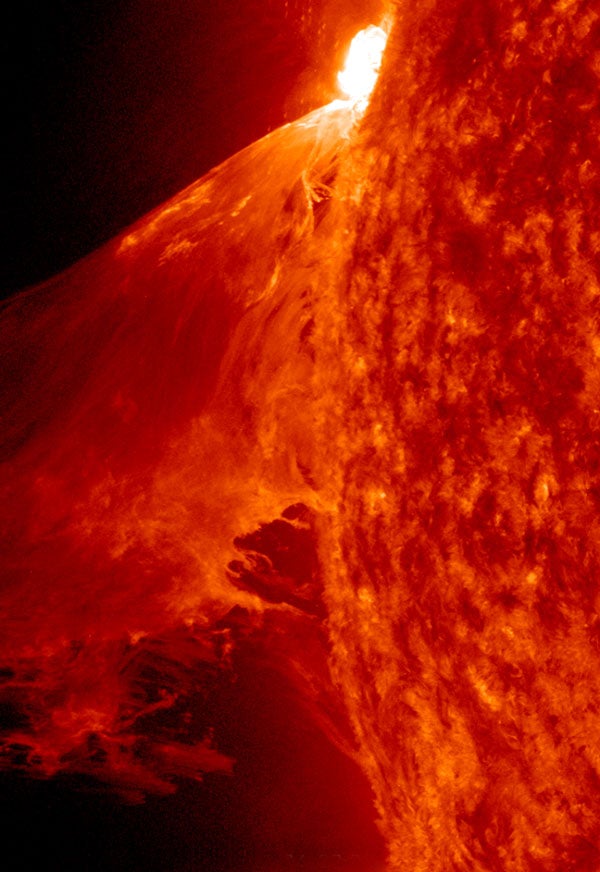The Sun’s magnetic field permeates its atmosphere — ranging from the solar photosphere (the visible “surface”) to the corona above. Think of this field as a collection of invisible rubber bands that are slowly stretched and twisted until they eventually reach a breaking point. When the field breaks, it releases a small amount of energy, known as a nanoflare. Millions of nanoflares occur every second, and the combined effect heats the solar corona to more than 1 million kelvins, hundreds of times hotter than the photosphere. The super-heated gas emits X-ray and ultraviolet radiation; Earth’s upper atmosphere absorbs it, which changes our atmosphere’s properties. This can disrupt communication, navigation, and surveillance systems, and also alter the orbits of satellites.
On much larger scales, huge sections of the corona explosively erupt in coronal mass ejections (CMEs) and solar flares. CMEs directed toward Earth cause geomagnetic storms, which can wreak havoc on electrical power grids and produce widespread blackouts. Highly energetic particles can damage or even disable critical spacecraft components. Intense radiation from flares has the same effects as nanoflares, but to a greater degree. The need to understand how solar phenomena impact Earth has led to an important science field called space weather. — James A. Klimchuk, NASA’s Goddard Space Flight Center, Greenbelt, Maryland










